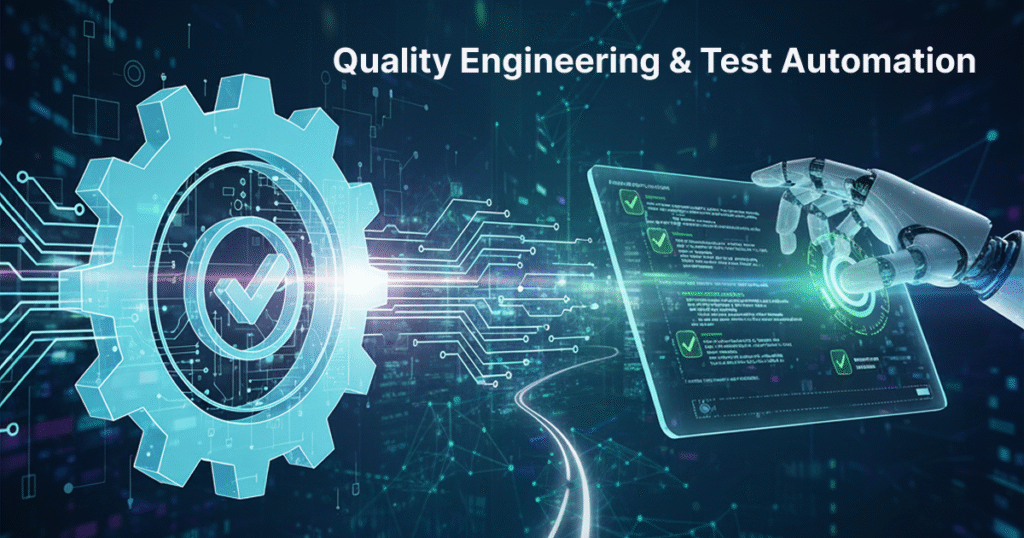The Digital Differentiator: Why Instant is the Only Acceptable Speed
In today’s hyper-connected world, the speed of your application isn’t just a technical specification—it’s the cornerstone of your brand’s reputation. We live in the Age of Instant Expectations. From checking a bank balance to streaming a movie, users expect everything to happen now. A one-second delay isn’t just an inconvenience; it’s a direct route to cart abandonment, user frustration, and, crucially, a measurable loss in revenue. According to industry data, a mere 100-millisecond delay can negatively impact conversion rates, proving that Performance and business success are irrevocably linked.
This relentless pressure has forced a critical, fundamental shift in our development culture. We can no longer afford to treat system speed and stability as separate entities. Instead, they must be two sides of the same coin: Resilience. The new mandate for any modern tech organization is a shift from simple Performance Testing to holistic, integrated Performance Engineering.

The Cultural Pivot: Moving Beyond Late-Stage Testing
For too long, performance has been treated as a final-stage hurdle—a rushed, stressful gate-check just before deployment. We’d run a Load Testing script, find a handful of bottlenecks, and frantically patch them. This reactive approach is incompatible with the speed of modern delivery.
The modern Performance Engineering practice demands that we stop asking, “Does the system meet its performance goal?” and start asking, “Is the system architected to survive and adapt when things inevitably go wrong?” This involves a massive cultural shift across the entire SDLC, embodied by the philosophies of Shift-Left and Shift-Right.
Shift-Left: Architecting for Speed: Performance engineers are now embedded with development teams, guiding the initial design. This ensures Application Performance Optimization is baked in from day one, not bolted on at the end. It’s about making strategic, early decisions on caching layers, database efficiency, and asynchronous processing, dramatically reducing the cost of fixing performance defects.
Shift-Right: Validating in the Wild: This acknowledges that the most accurate test environment is production itself. It involves continuous, non-intrusive testing and advanced monitoring, providing a real-time, ground-level view of system health under actual user load.
Mastering the Cloud-Native Chaos
The most significant complexity driving the need for resilience is the shift to cloud-native architectures. Microservices, containers (like Docker), and advanced orchestration platforms (Kubernetes) are the engine of modern Enterprise System Scalability. They allow us to scale individual components, but they introduce a complex web of dependencies.
A simple user interaction may now ping five different services, traverse multiple networks, and hit several databases. Performance engineering in this landscape focuses on two major battles:
Latency Management: The network is the new bottleneck. Engineers must meticulously profile and optimize the communication between services to shave off milliseconds.
Resource Contention: In a containerized environment, a single misconfigured service can starve a critical one, leading to cascading failures. Fine-tuning Kubernetes resource limits and auto-scaling policies is crucial for maintaining performance predictability.
Chaos Engineering: The Ultimate Test of Resilience
To truly build a resilient system, you cannot merely hope it will withstand a crisis; you must force the crisis. This is the philosophy of Chaos Engineering.
Think of it as a vaccine for your software. You inject a small, controlled dose of failure—a crashed database, network latency, or a service overload—to stimulate an immune response in your system. The goal of this extreme Stress Testing is to understand the system’s failure behavior. Does it fall over hard, or does it gracefully degrade? Does it recover autonomously?
By routinely simulating these unpredictable events in controlled, production-like environments, teams learn to:
Identify Hidden Weaknesses: Uncover single points of failure that traditional Load and Stress Testing might miss.
Validate Recovery Mechanisms: Confirm that automated failovers, circuit breakers, and load balancers actually work as designed, allowing the system to be self-healing.
Train the Team: Get engineers accustomed to responding calmly and effectively to an outage, transforming a potential crisis into a low-stakes learning opportunity.
The Power of Visibility: Observability and AI
Resilience is impossible without complete visibility. The modern performance toolkit moves beyond simple logging and metrics. It demands Observability, which integrates logs, metrics, and traces to provide a deep, contextual understanding of system behavior. If a request is slow, a full-stack trace can pinpoint the exact microservice and line of code causing the delay in minutes, not hours.
Furthermore, the integration of AI/ML is the next frontier of performance and resilience. These intelligent tools are used for:
Predictive Load Modeling: Analyzing past traffic patterns to accurately forecast future spikes, allowing for pre-emptive scaling and capacity planning.
Automated Anomaly Detection: Algorithms spot subtle, non-obvious performance degradations that signal an impending issue long before an alert threshold is breached, preventing a major incident.
Optimization: AI can automatically tune resource allocation to maintain crucial Service Level Objectives (SLOs), effectively merging Performance Engineering with the core principles of Site Reliability Engineering (SRE).
Conclusion: The Adaptive System
In the Age of Instant Expectations, the system that wins is the one that can anticipate, adapt, and recover flawlessly. Performance Engineering is no longer a quality assurance function; it is the central discipline for building an adaptive, anti-fragile business platform. By embracing Chaos Engineering, adopting cloud-native best practices for Enterprise System Scalability, and leveraging the power of Observability and AI, we ensure that our applications are not just fast, but resilient enough to handle the volatile, high-pressure demands of the modern user. This proactive, engineering-first approach is the only way to deliver an instant, seamless experience, turning a competitive challenge into a profound business advantage.
Search
Categories

Author
-
Priyashalini is a Quality Control with 8 years of experience Manual and Automation Testing .She leads the QC team, coordinates inspection activities and maintains compliance with client, company, and industry specifications, Strategy and Planning. Also Problem Solving & Continuous Improvement, Documentation & Reporting .Identify skill gaps and arrange training for team members on new tools, methodologies, or project-specific technologies.Review and approve test cases and test scripts created by the team to ensure comprehensive coverage and accuracy against requirements.
